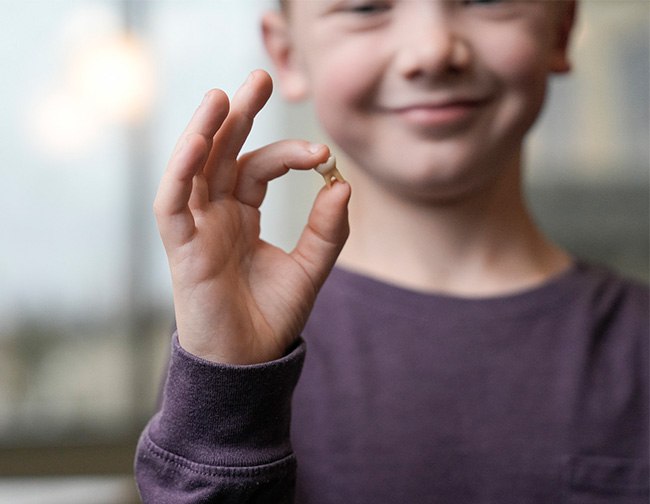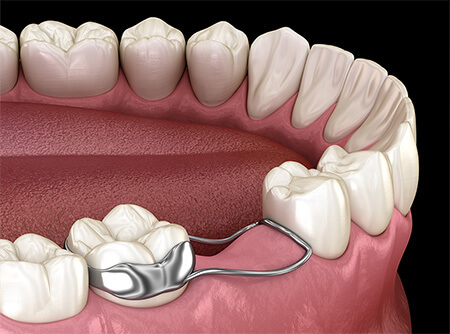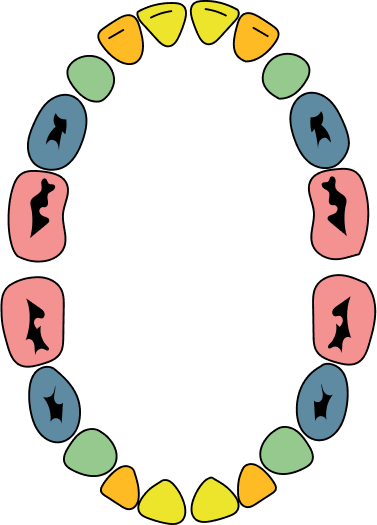Surgical procedures
Oral surgery options and dental health procedures for kids
At Hamilton County Pediatric Dentistry, we understand that surgery can be intimidating for children and parents. To ease these fears, we prioritize each child’s well-being at every step, whether they need a simple tooth extraction or something more complex.

Kids’ dental surgery options
Oral surgery doesn’t have to be a scary experience. Dr. Laura Juntgen (rhymes with “dungeon”) combines her extensive experience with advanced skills to perform necessary treatments with minimal discomfort—no matter where your child’s surgery takes place.
Our dental office features two private surgical suites for one-on-one treatments, and we utilize private operating rooms in the adjoining hospital for more complex procedures.
Hamilton County Pediatric Dentistry’s pediatric dental surgery services for kids include:
- Oral biopsies
- Frenectomies
- Space maintenance
- Tooth extractions
Oral biopsies
If lumps or bumps are spotted on X-rays or during preventative exams, they often go away with medication, oral hygiene changes, or healing time.
However, when a lesion grows or persists in a child’s mouth despite treatment, Dr. Juntgen may recommend removal through oral biopsy. Then, she’ll send the specimen to Indiana University for a quick, thorough review by their experts so you can find out the results promptly.
Frenectomies
In your child’s mouth, the lingual (tongue) frenum is the soft tissue attachment from the underside of the tongue to the bottom of the mouth. The labial (lip) frenum is the soft tissue extending from the upper lip, which connects to the gum tissue between the upper two front teeth. When these tissues are restrictive, they can cause speech and feeding issues. Early intervention can prevent complications and promote better oral and overall health.
Potential complications of restrictive tissue:
In newborns—
- Trouble latching onto the breast or bottle
- Painful nursing for mothers
- Poor weight gain
In older children—
- Speech delays
- Mouth breathing or snoring
- Teeth grinding or gaps between teeth
A frenectomy, which is a procedure to remove the frenum tissue, is commonly recommended to help improve these issues. Dr. Juntgen will evaluate your child’s frenum at every preventative care appointment to assess potential frenectomy needs.
Space maintenance

If a child loses a baby tooth too early due to decay or an accident, keeping the rest of their teeth in place—using space maintainers—can ensure proper alignment of permanent teeth upon eruption and help prevent future dental problems.
Without space maintenance after tooth loss, neighboring teeth can shift and increase the need for orthodontic treatment. Dr. Juntgen offers two types of space maintainers:
- Removable: Similar to retainers, removable space maintainers are ideal for older or more responsible kids who can manage their own care.
- Fixed: Perfect for younger children or kids with specific dental needs, fixed space maintainers include band-and-loop maintainers and lingual arches.
24/7 emergency pediatric dental care
A dental emergency is a scary event for children and parents alike. We understand, and we’re here for compassionate emergency pediatric dental care whenever you need it.
- Same-day or after-hours appointments
- Call us anytime at 317-846-5893 for a phone or in-person evaluation
- Medications prescribed as needed



Extractions
Although we work hard to save all teeth, some situations call for tooth removal.
Dr. Juntgen may determine that extraction is necessary to restore oral health, prevent or alleviate pain from impacted canines, and stop the spread of infection from severely decayed teeth that can’t be saved with restorative care, like pulp therapy. Extracting a tooth may also be recommended to create space for the proper alignment of permanent teeth using orthodontic devices.
At Hamilton County Pediatric Dentistry, we work hard to make every visit pleasant, even extraction appointments! That said, we could use your help to improve your child’s experience. Since kids are good at sensing loved ones’ anxiety, try to remain calm and relaxed when talking about an extraction appointment. We recommend avoiding trigger words—such as pain, pull, needle, and shot—since they can create anxiety.
During your child’s extraction appointment, we use several techniques to make them comfortable. Our team is highly trained in “dental sleight of hand,” keeping the anesthetic out of sight. We’ll also use topical numbing jelly and laughing gas to make the administration of sleepy juice as pleasant as possible.
Aftercare instructions
Watch your child closely throughout the healing process, paying special attention to them until the anesthetic’s effects wear off.
- Monitoring: For the first one to two hours after the extraction, you may need to remind your child to avoid biting, pinching, scratching, or sucking while their mouth is still numb so they don’t unknowingly hurt their tongue, inner cheeks, or lips. If bleeding resumes, have them bite on a damp towel.
- Medication: If needed, give your child over-the-counter pain medication (such as Tylenol or ibuprofen) during the first one to two days after their procedure. Follow the instructions on the package for appropriate dosing.
- Snacks & meals: If possible, wait one to two hours before allowing your child to eat. If they’re hungry and can’t wait until the anesthetic goes away, only give them a soft snack that doesn’t require chewing (such as a milkshake, smoothie, yogurt, applesauce, or soup) while their mouth is numb. For the first 24 hours, your child should also avoid using a straw for drinking or forcefully spitting. In the first three days, they should also refrain from eating hard or crunchy foods, such as chips, pretzels, tacos, popcorn, etc.
- Rest & periods of activity: Over the remainder of the day, keep your child from participating in high-intensity/strenuous activities (such as gym class, sports practices, and rough-housing). Also, place an old towel or rag over their pillowcase to prevent staining while sleeping (or relaxing on a couch).
- Oral health: It’s okay for your child to resume normal brushing and flossing tonight. Just use caution around the extraction socket.
Also, don’t forget to alert the tooth fairy!
If you have questions or your child’s pain and bleeding aren’t controlled with over-the-counter pain medication or gauze pressure, contact our office.